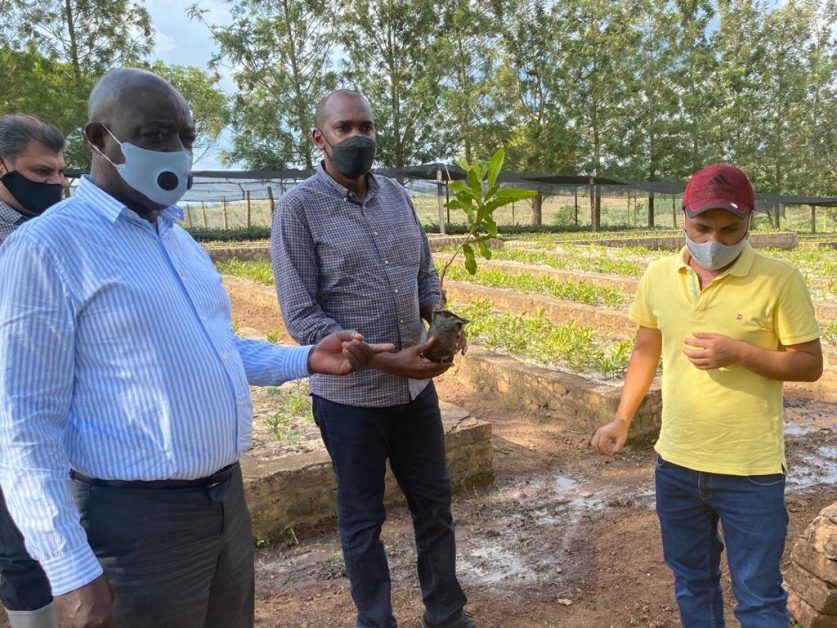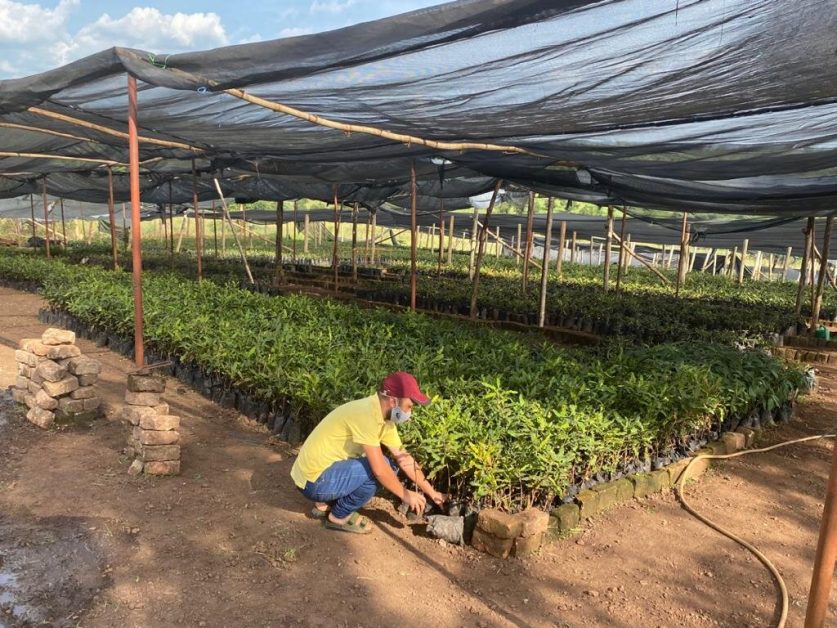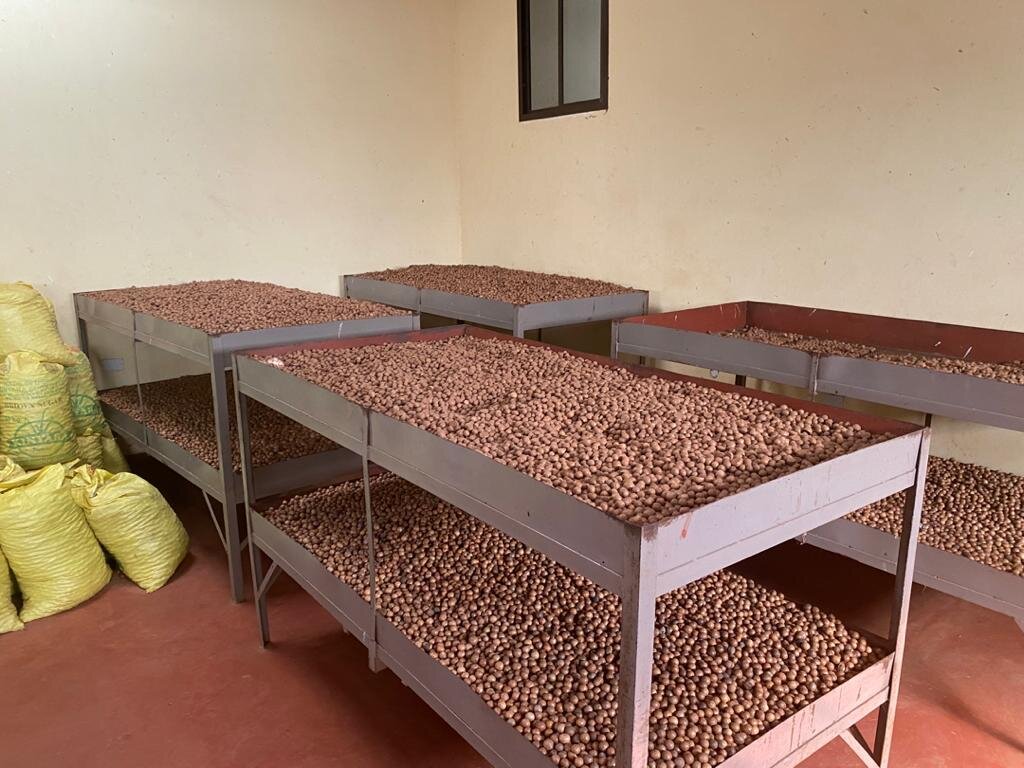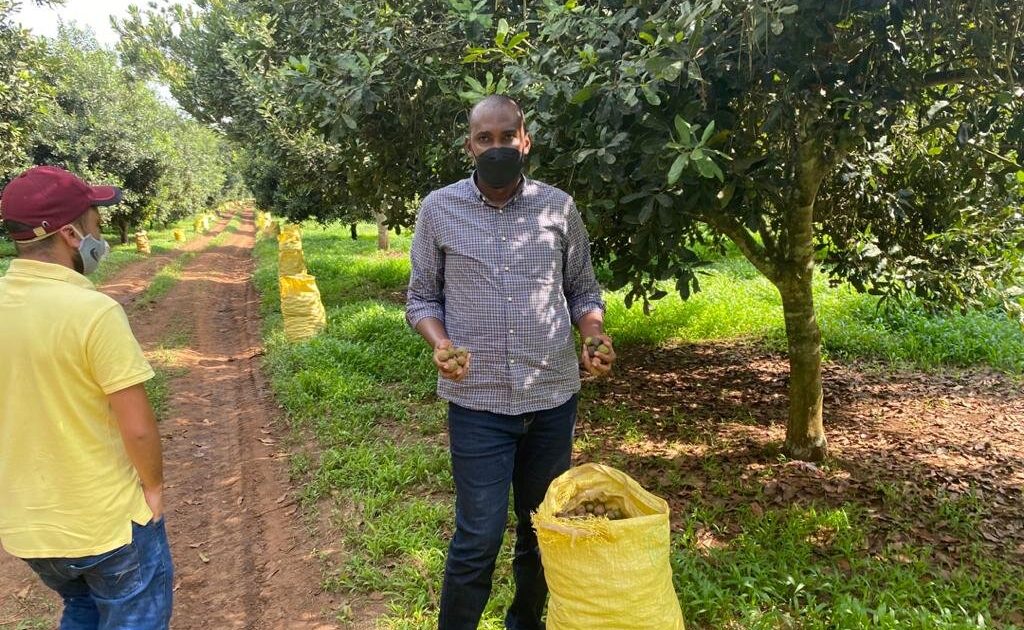By Business Express Reporter
The Minister of Agriculture, Animal Industry and Fisheries (MAAIF), Hon. Frank K. Tumwebaze, has urged Ugandans to take advantage of unused land by investing in macadamia cultivation, describing it as a high-value crop with the potential to transform livelihoods and boost the country’s agricultural exports.
The Minister made the appeal on Friday after touring Amafh Farms in Mityana District, one of Uganda’s largest macadamia plantations covering over one square mile. He was accompanied by his predecessor, Hon. Vincent Bamulangaki Ssempijja, now Minister of Defence, who also lauded the crop’s potential during his time at MAAIF.
During the visit, Minister Tumwebaze praised the farm’s efforts in both cultivation and value addition through processing and export. He said government had officially adopted macadamia as one of the priority crops under the ministry’s strategy and would soon roll out a nationwide promotion plan.
“Macadamia is one of the high-yielding crops that MAAIF has embraced, and we are developing a rollout strategy to ensure Ugandans benefit from its potential. The global demand is rapidly increasing while supply remains limited. If you have unutilized land and some savings, macadamia is an excellent investment opportunity,” Tumwebaze said in a message shared on his official X (Twitter) account.
He explained that macadamia nuts and their derivatives—including edible oils—are highly sought after on the international market because of their nutritional and health benefits.
“The economics of the crop are very exciting. Its products fetch premium prices globally, and yet the supply chain remains thin. Uganda is in a strong position to enter this space competitively,” he added.
Strong Returns for Farmers
An analysis by MAAIF shows that establishing a one-acre macadamia orchard requires about 100 trees, with initial establishment costs averaging UGX 4 million. Farmers must wait 2–3 years before the first harvest, but once the trees begin bearing fruit, returns are substantial. Each tree can produce up to 75 kilograms of nuts annually, which, at an average farm-gate price of UGX 5,000 per kilogram, translates into UGX 37.5 million in yearly revenue per acre.
The trees also remain productive for decades. Former Agriculture Minister Ssempijja, who also toured Amafh Farms in 2023, reaffirmed government’s commitment to prioritizing the crop.
“A well-managed acre of macadamia can generate between UGX 60–70 million annually. This is why the government has added macadamia to the list of priority crops. The market is not just regional but global, and we are seeking partners and farmers ready to scale up production,” Ssempijja noted.
A Global Crop with Growing Demand
Macadamia is native to Australia but is now widely cultivated in countries such as Brazil, Costa Rica, Hawaii, New Zealand, Kenya, and increasingly Uganda. Globally, production has increased by more than 50 percent over the last decade, with corresponding growth in prices. In Australia, the crop has earned the nickname “green gold” for the way it has transformed the fortunes of smallholder farmers.
Nutritionally, macadamia nuts are packed with healthy fats, vitamins, minerals, and antioxidants. Studies have linked them to improved heart health, weight management, better digestion, and blood sugar regulation. These benefits, combined with a growing demand for plant-based foods, have made macadamia products especially attractive to health-conscious consumers in Europe, North America, and Asia.

Uganda’s Opportunity
Experts believe Uganda has the climate and soil conditions necessary to become a leading producer in Africa. With a long harvest window—October to March and June to August—farmers can generate consistent income from macadamia. The crop also lends itself to intercropping, particularly with coffee, enabling farmers to earn income from short-term crops while waiting for macadamia trees to mature.
Spacing is an important factor in profitability. When grown alone, macadamia trees require spacing of 7.5m by 7.5m, giving about 75 trees per acre. Some farmers prefer denser planting at 6m by 6m, which accommodates up to 100 trees per acre, increasing potential yields.
Government’s Commitment
Minister Tumwebaze assured Ugandans that government would not only promote macadamia cultivation but also support the entire value chain, from seedling supply and farmer training to processing and access to export markets.


“Our vision is not just about planting trees. It’s about creating a full ecosystem—farmers, processors, exporters, and markets. We want Uganda to be recognized internationally as a hub for premium-quality macadamia,” he said.
He emphasized that macadamia presents an opportunity to convert idle land into a sustainable source of wealth, especially for smallholder farmers and investors seeking long-term returns.
“This is not simply about a crop. It is about transforming Uganda’s agricultural sector and positioning our country as a global competitor. With macadamia, we can achieve both food security and economic empowerment,” Tumwebaze concluded.




